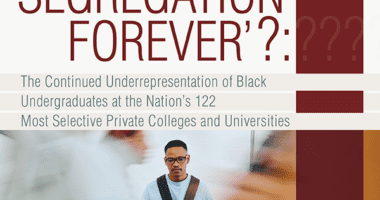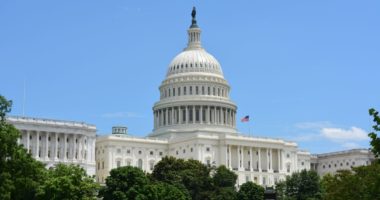Fulfilling the Promise of the Pell Grant Program: Most Colleges Aren’t Doing Enough
Pell graduation rates at more than 1,100 public and private nonprofit institutions analyzed in a new Ed Trust report
WASHINGTON (September 24, 2015) – Several recent reports have estimated a significant gap in the college completion rates of the low-income students who receive federal Pell grants and other college students, leading some to question the effectiveness of this investment of taxpayer dollars. But, according to a new report and online data tool released today by The Education Trust, the average graduation gap between Pell and non-Pell students at the institutional level is actually much smaller: only 5.7 percentage points. And more than a third of four-year colleges and universities have even smaller gaps or no gaps at all. These data deliver a powerful blow to those who question whether taxpayer dollars are being wasted or whether most low-income students are even capable of completing college.
The report, The Pell Partnership: Ensuring a Shared Responsibility for Low-Income Student Success, provides Pell graduation rate data for 1,149 four-year public and private nonprofit colleges and universities. This is the first time information of this kind is widely available to the general public. But while this resource will provide pertinent information that policymakers, researchers, and students and their families have been waiting for — it’s not all good news.
“At the national level, the graduation rate for Pell Grant recipients is just 51 percent compared to 65 percent for non-Pell students,” said Andrew H. Nichols, director of higher education research and data analytics for Ed Trust and author of the report. “By closing existing gaps at the college level, especially the egregiously large gaps that exist in about one-third of four-year institutions, we can cut that gap in half. To go the remaining distance, though, we’ll have to take on the even more challenging matter of enrollment stratification, because where Pell students do and don’t enroll matters quite a bit.”
The research finds that roughly half of the 14 percentage-point completion gap in the sample is caused by enrollment stratification. Compared to non-Pell students, Pell students are twice as likely to attend institutions with very low graduation rates. Non-Pell students on the other hand, are much more likely to attend more selective institutions, where they have a better chance of completing a degree.
Ed Trust researchers spent a year gathering the data discussed in this report, using four primary sources:
- State higher education systems and coordinating bodies,
- Colleges and universities across the nation,
- U.S. News and World Report, and
- The Integrated Postsecondary Education Data System (IPEDS).
Nichols notes large differences in student success among otherwise similar institutions. “While institutions may be similar in mission and in the type of students they enroll, they often have vastly different graduation results, especially for low-income students,” he said. The Trust’s paper provides compelling case studies that show campus leaders, administrators, and faculty have the power to equitably and effectively serve all of their students when they organize around student success.
This report comes on the heels of the Obama administration’s release of its revamped College Scorecard, along with massive amounts of new higher education data — including new Pell graduation data. While the author is encouraged by the release of these data, he notes its many limitations. Because the data are from the National Student Loan Data System, which was designed to track federal financial aid, they do not contain information on students who pay for college without financial aid, making good equity comparisons impossible.
“More college and university leaders need to follow the example of leading institutions and organize around the success of their Pell students. But if more institutions are to prioritize student success, Congress has work to do, too. We urge Congress to hold institutions that receive federal financial aid accountable for enrolling and graduating their fair share of Pell Grant recipients, as recommended in our Tough Love report,” said José Luis Santos, Ed Trust’s vice president of higher education policy and practice. “In addition, the federal government must require that institutions regularly report data on graduation rates for Pell Grant recipients. Parents, students, and policymakers deserve to know how their schools are doing.”
###
The Education Trust is a nonprofit advocacy organization that promotes high academic achievement for all students at all levels, pre-kindergarten through college. Its goal is to close the gaps in opportunity and achievement that consign far too many young people — especially those from low-income families or who are black, Latino or American Indian — to lives on the margins of the American mainstream.









